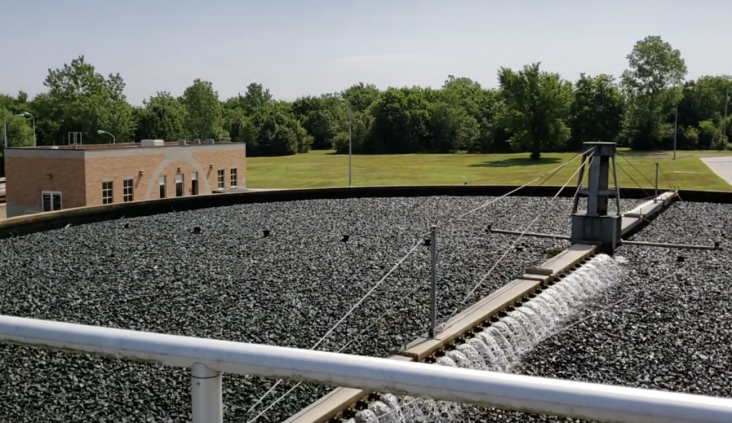Study: $230 million price tag for wastewater treatment plant overhaul
by June 8, 2021 9:49 pm 1,856 views

The Massard Water Reclamation Facility (formerly the Massard Wastewater Treatment Plant) is in dire need of updating, renovation and expansion, Fort Smith Director of Utilities Lance McAvoy told the Fort Smith Board of Directors at a study session Tuesday (June 8).
The facility, which was constructed in 1966, has had very little in terms of upgrades or expansions over the past 55 years and many areas of the plant are in poor condition, meaning there is an eminent danger of collapse of some process that could put the plant out of operation, said Jerry Martin with Garver, a North Little Rock-based regional engineering consultant firm.
Rusty Tate, a process engineer with Garver, presented a plan with multiple phases that would bring the plant up to meeting the immediate needs of the east half of the city and Chaffee Crossing as well as the future needs with predicted residential, commercial and industrial growth.
The upgrade and remodel of the plant could be completed in phases, with many of the phases only needed if and when certain criteria are met in the city in terms of growth or environmental regulations, he said.
The total cost of the new facility, which would incorporate components of the existing facility, would be approximately $230.64 million, McAvoy said.
Only three parts of the renovation are needed “right away,” he said. Phase A and Phases B1 and B2 are desperately needed.
Phase A addresses aging infrastructure, particularly the trickling filter system, which was rated in poor condition because parts are no longer available; the distributor arms are leaking; and it is in danger of full collapse. Cost projections for Phase A are $21.4 million, McAvoy said.
Phase B1 and B2 include construction of new 50 million gallons per day (MGD) headworks and a wet weather treatment and disinfection system. Projected costs for those are $44.16 million and $51.36 million, which brings the total for the immediate needs to $117.36 million.
McAvoy said all three phases are included in the capital improvement plan (CIP) he presented to the board in the fall 2020, with work represented in the consent decree work needed and in the non-consent decree work needed.
“Right now, we are paying for the sins of the fathers through the consent decree. I don’t want 20 years from now to read or hear or see on the news that Fort Smith is once again paying for the sins of the fathers,” McAvoy said.
Tate said it would take approximately three years to complete the three phases.
In 2018, the city hired Garver to conduct an evaluation of the facility and produce a master plan for the eventual upgrade and/or replacement of components of the facility.
The Massard facility originally consisted of an influent pump station; two primary clarifiers, which reduce the content of solids and pollutants embedded in those solids by allowing them to either float to the top or settle to the bottom of the tank; two trickling filters consisting of a fixed bed of rocks over which wastewater flows downward and pollutants are then removed by a layer of microbial slime growing on the rocks; two secondary clarifiers, which remove solids consisting of biological growth; and chlorine disinfection, which destroys and reduces disease causing microorganisms, McAvoy said.
At that time the discharge from the WRF flowed directly into Massard Creek. The facility received its first upgrade 20 years later. During this upgrade, a third secondary clarifier was added while the original two secondary clarifiers underwent a complete rehabilitation.
The last upgrade in 1986 moved the discharge point from Massard Creek to the Arkansas River. The fourth secondary clarifier was added in 1998. A new biosolids handling building, which is used to process waste solids from the treatment process and prepare them for disposal at the landfill, was constructed and some rudimentary odor control was added, a historic report of the facility said.
The facility had its last major upgrade in 2001. The influent pump station was upgraded with new pumps and a grit removal chamber was added. Two secondary clarifiers were replaced with larger clarifiers, and one final clarifier was closed for possible future use. A post solids contact aeration basin and blower building were added to treat and remove ammonia and nitrogen from the waste stream.
As a safety measure, the facility was converted from chlorine disinfection to UV disinfection and a UV Control building was constructed.
Garver recommended an anaerobic/anoxic/aeribuc (A2O) process with Actiflo overall flow (for the wet weather management) diagram for the facility.
